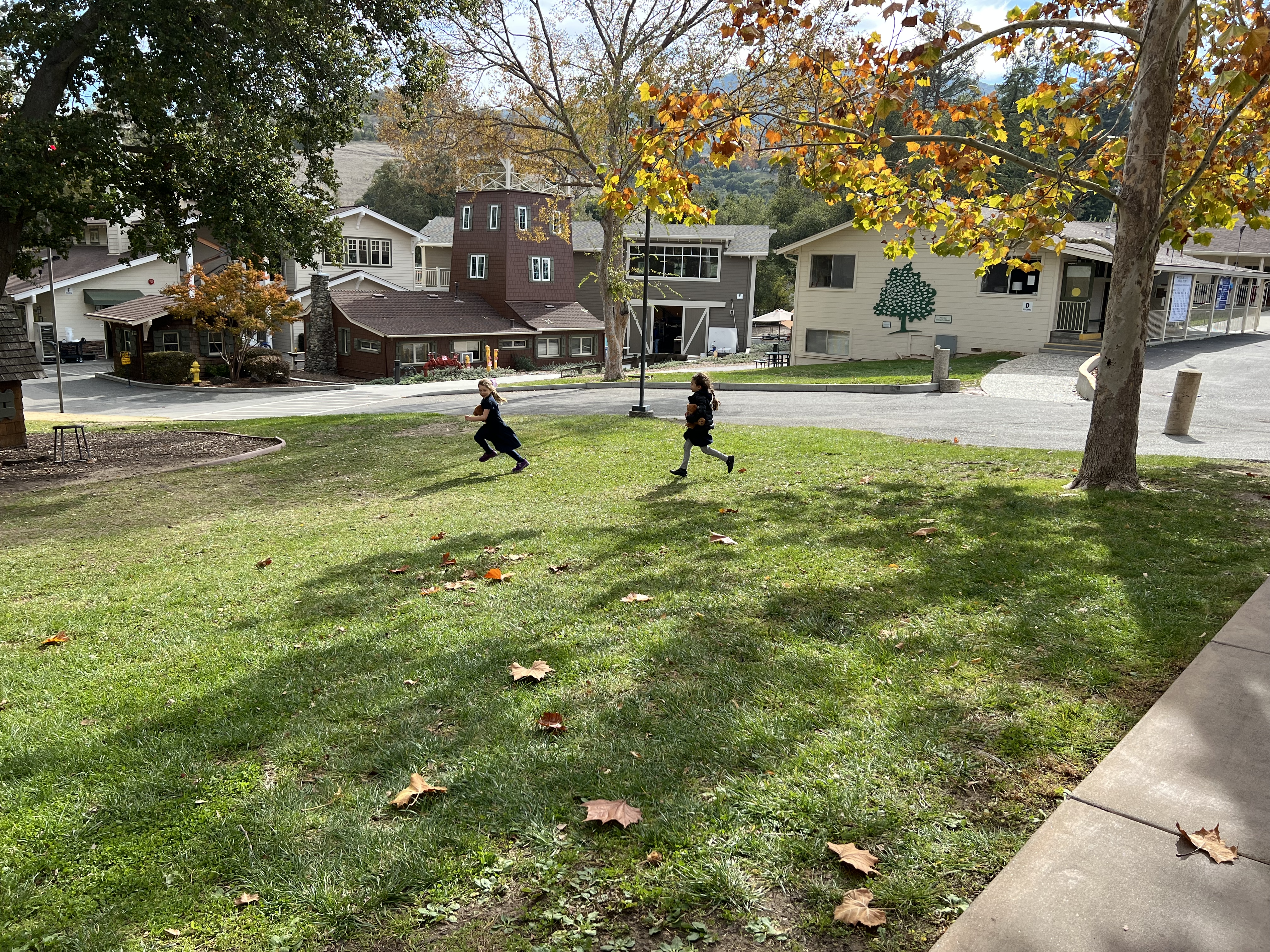By Amy Hand, Head of Middle School
Hi Mr. Ravizza,
When I got home today, I went to my front yard and saw a mushroom and three snails!

So wrote a 7th grade scientist in the midst of an ecology unit with Brian Ravizza. After studying the same spot in her yard daily, she was so excited by this all-of-a-sudden big change that she felt compelled to send the email above – unprompted, unassigned, and with a picture, to boot! – to her teacher.
Students in 7th grade science class have been engaged this year in the theme of change over time. They’ve learned how to hone their skills of observation, to look closely, to measure and to record changes, and above all, to pay attention to their surroundings – because that’s what scientists do.
They’ve put these skills to use across many contexts: in their own backyards, when they noticed they heard birdsongs at different times of day during the smokiest days of the fire season; at Hillbrook’s Ross Creek, where they noted impacts of the changes in water level and vegetation on our own campus; in their snail lab, as they observed how water temperature influences the speed of snails; and in a recent shell lab, in which they looked for ways pH level can affect living organisms and ecosystems.
At Hillbrook, the skills middle schoolers learn are never taught as ends in themselves – they’re always taught so that students have a toolbox for tackling essential questions that lead to enduring understandings. This means that while students are recording their close observations of a shell or a corn seed each day, they are developing fluency with the metric system, with scale drawings, or with balancing a scale or focusing a macro lens – but more importantly, they’re seeing that mastering those skills enables them to think bigger.
When they study the creek, the question becomes, “How is our own local watershed changing over time, and why should we care about the creatures affected?” When documenting what happens to a shell submerged in a vinegar solution, the question becomes, “Knowing that the increased CO2 in our atmosphere leads to ocean acidification, what can we hypothesize will happen to shell matter in our oceans as the atmosphere changes?” Students aren’t just doing classroom labs – they’re modeling real-world phenomena that inspire interest in the natural world around them, and compel them to stewardship of that natural world.
As they consider what that stewardship could look like, they were lucky to have alumni Rachelle DeSantis, Class of 2017, serve as a guest lecturer. Rachelle, currently a senior at Los Gatos High School, is a certified Climate Reality Leader by virtue of her training through the Climate Reality Leadership Conference. Her passion and her expertise not only showed our 7th graders what an incredible foundation of learning Hillbrook had laid for her, it taught them that learning is itself the foundation for action and change.
The experience of 7th grade science students exemplifies so much of Hillbrook’s philosophical approach: learning by doing, engaging in real-life questions that matter, emphasizing critical thinking and analysis, and turning education into action – all while staying connected to the Hillbrook campus and, most importantly, the Hillbrook community. We can’t wait to see, over time, what changes these students make in their own worlds!
